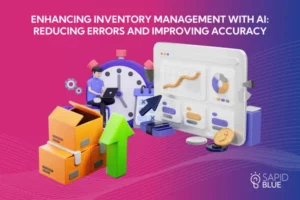Artificial Intelligence (AI) is rapidly gaining traction and reshaping industries across the globe, and the oil and gas sector is no exception. Even though this industry relies heavily on machinery, AI is driving significant advancements in innovation and operational efficiency. The traditional methods of exploration, which were often slow and costly, are being transformed by AI’s sophisticated algorithms. These algorithms are now able to process seismic data and forecast potential hydrocarbon deposits with high accuracy, leading to substantial reductions in both time and financial investments, while also minimizing environmental impact.
In addition, AI-powered predictive maintenance is making a major impact on drilling operations by continuously monitoring equipment, identifying potential issues before they arise, and minimizing downtime. A PwC study projects that AI could contribute up to US$320 billion to the Middle East economy by 2030. Furthermore, AI’s annual contribution to the region’s growth is anticipated to increase by 20% to 34%.
Given these promising projections, it is clear that companies should strategically invest in AI solutions for oil and gas industry to capitalize on the substantial economic benefits and the rapid expansion of AI applications. At SapidBlue, we have developed innovative AI solutions for oil and gas industry tailored to meet the specific needs of this sector. For instance, our work with clients has focused on using AI-driven analytics to enhance operational efficiency and streamline exploration processes. Additionally, AI-powered predictive maintenance has proven to be a game-changer, helping companies reduce downtime and avoid costly equipment failures. By exploring these use cases and leveraging our expertise, artificial intelligence in oil and gas industry can unlock new opportunities for innovation and profitability.
Unleashing the Power of AI: Top 5 Game-Changing Solutions and AI Use Cases in the Oil and Gas Industry by SapidBlue

Intelligent Document Management and Retrieval
- AI-powered search and document retrieval: Leverage GenAI to help employees quickly find technical manuals, operational procedures, regulatory documents, and past project reports.
- Context-aware document search: Enables users to find specific information within large datasets, including geological reports, operational logs, and contracts.
Predictive Maintenance and Asset Management
- Equipment failure prediction: AI can analyze sensor data from machinery (e.g., pumps, turbines) to predict failures and generate maintenance alerts.
- Automated troubleshooting guides: AI can generate step-by-step instructions for resolving equipment malfunctions or optimizing asset performance.
Knowledge Extraction and Expertise Sharing
- Automated Q&A systems: Employees can ask AI-driven systems for answers based on historical data, project reports, and expert knowledge stored in the knowledge base.
- Expert recommendation system: AI can suggest subject matter experts (SMEs) based on the query or issue raised, matching the problem with experts’ historical solutions or project involvement.
Advanced Simulation for Design and Engineering
- Material Design and Customization: AI can be used to generate new material formulations and optimize existing ones. For example, AI algorithms can suggest new composite materials or alloys for better performance in harsh environments (e.g., high-pressure, high-temperature wells).
- Finite Element Analysis (FEA): Generative AI can be used alongside FEA models to simulate and test material behaviors in engineered products, such as drilling equipment or pressure vessels. This can help optimize the design and ensure the materials used meet quality requirements without needing extensive real-world testing.
Material Quality Assessment
- Automated Material Analysis: Generative AI can analyze data from material testing reports, chemical composition, and lab results to generate insights on the quality of materials used in operations. For example, it could review the quality of steel, pipelines, or drilling materials and identify if they meet industry standards for safety and performance.
- Predictive Quality Control: By analyzing historical data and patterns, AI can predict potential defects or degradation in materials, such as corrosion in pipelines, fatigue in drilling equipment, or the quality of cement used for wellbore sealing.
- Defect Detection in Material: AI-powered computer vision systems can examine images of materials or equipment for signs of cracks, corrosion, wear, and other defects. This allows for faster detection, reducing the need for manual inspection.










